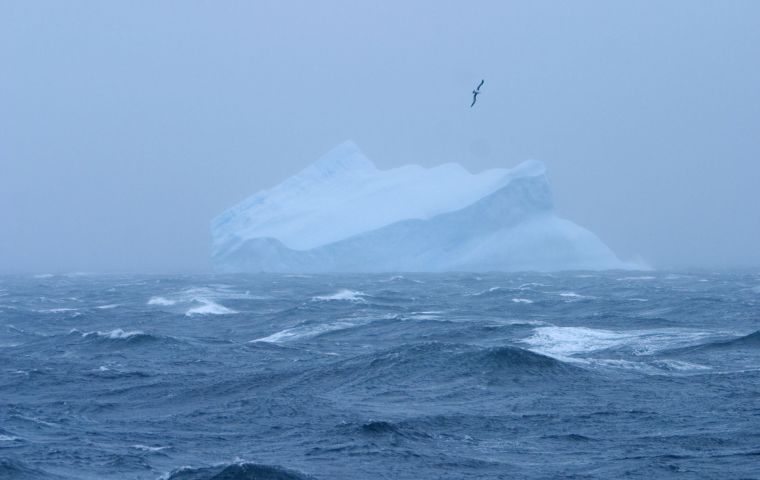MercoPress. South Atlantic News Agency
National Geographic makes it official, Southern Ocean is the fifth ocean
 “The Southern Ocean has long been recognized by scientists, but because there was never agreement internationally, we never officially recognized it”
“The Southern Ocean has long been recognized by scientists, but because there was never agreement internationally, we never officially recognized it” Since National Geographic began making maps in 1915, it has recognized four oceans: the Atlantic, Pacific, Indian, and Arctic Oceans. However starting on June 8, World Oceans Day, it will recognize the Southern Ocean as the world’s fifth ocean. This is because the swift current circling Antarctica keeps the waters there distinct and worthy of their own name.
“The Southern Ocean has long been recognized by scientists, but because there was never agreement internationally, we never officially recognized it,” says National Geographic Society Geographer Alex Tait.
Geographers debated whether the waters around Antarctica had enough unique characteristics to deserve their own name, or whether they were simply cold, southern extensions of the Pacific, Atlantic, and Indian Oceans.
“It’s sort of geographic nerdiness in some ways,” Tait says. He and the National Geographic Society’s map policy committee had been considering the change for years, watching as scientists and the press increasingly used the term Southern Ocean.
The change, he adds, aligns with the Society’s initiative to conserve the world’s oceans, focusing public awareness onto a region in particular need of a conservation spotlight.
“We’ve always labeled it, but we labeled it slightly differently [than other oceans],” Tait says. “This change was taking the last step and saying we want to recognize it because of its ecological separation.”
Marine biologist and National Geographic Explorer at Large Sylvia Earle praised the cartographic update.
“While there is but one interconnected ocean, bravo to National Geographic for officially recognizing the body of water surrounding Antarctica as the Southern Ocean,” Earle wrote in an e-mailed statement. “Rimmed by the formidably swift Antarctic Circumpolar Current, it is the only ocean to touch three others and to completely embrace a continent rather than being embraced by them.”
While the other oceans are defined by the continents that fence them in, the Southern Ocean is defined by a current.
Scientists estimate that the Antarctic Circumpolar Current (ACC) was established roughly 34 million years ago, when Antarctica separated from South America. That allowed for the unimpeded flow of water around the bottom of the Earth.
The ACC flows from west to east around Antarctica, in a broad fluctuating band roughly centered around a latitude of 60 degrees south—the line that is now defined as the northern boundary of the Southern Ocean. Inside the ACC, the waters are colder and slightly less salty than ocean waters to the north
Extending from the surface to the ocean floor, the ACC transports more water than any other ocean current. It pulls in waters from the Atlantic, Pacific, and Indian Oceans, helping drive a global circulation system known as the conveyor belt, which transports heat around the planet. Cold, dense water that sinks to the ocean floor off Antarctica also helps store carbon in the deep ocean. In both those ways, the Southern Ocean has a crucial impact on Earth’s climate.
(From Nat. Geo “There’s a new ocean now—can you name all 5?” By Sarah Gibbens)




Top Comments
Disclaimer & comment rulesCommenting for this story is now closed.
If you have a Facebook account, become a fan and comment on our Facebook Page!